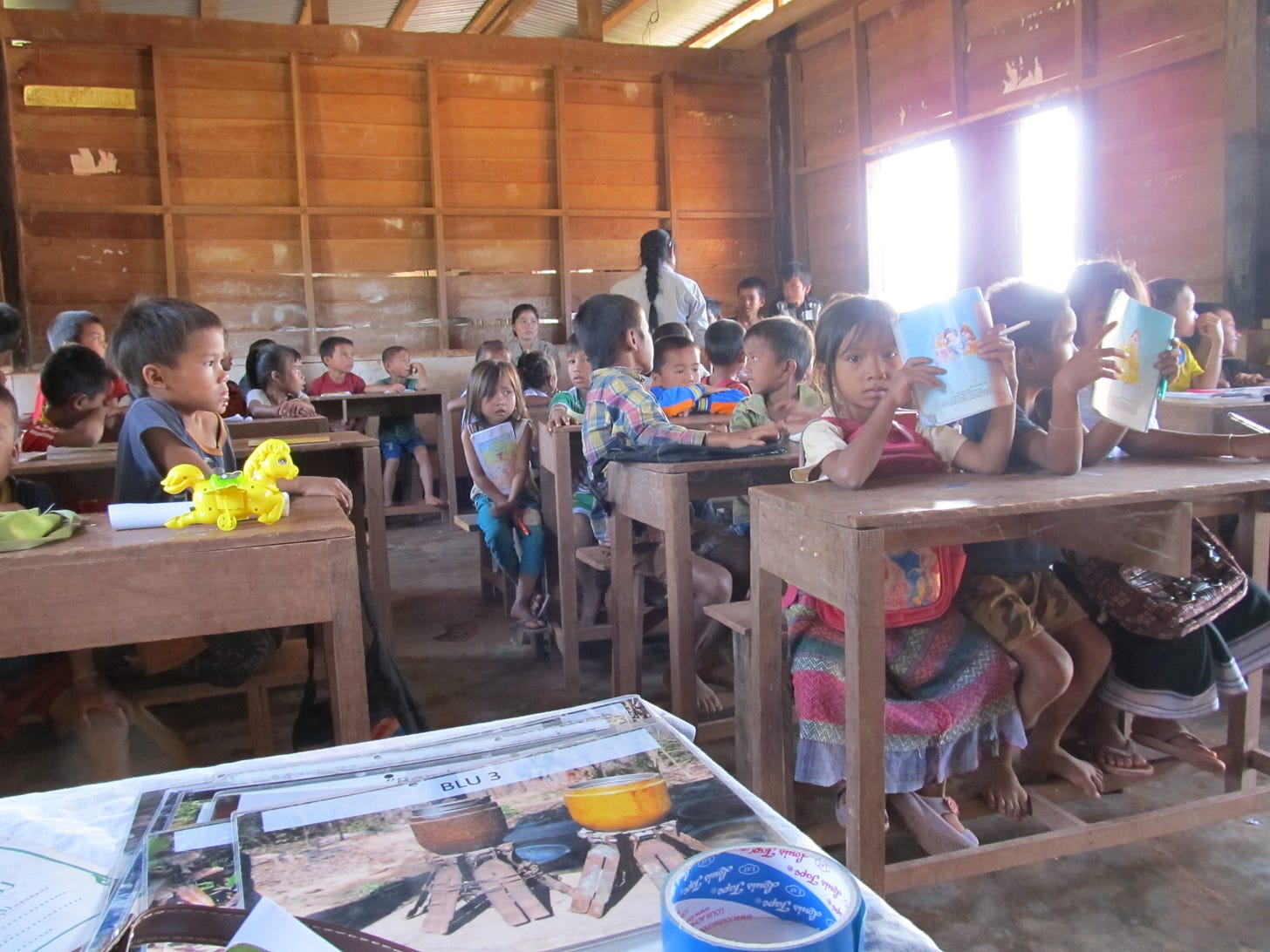A Deadly Freeze: US Aid & Bombs in Laos
Guest post on the impact of the US aid freeze on Laos.
Happy Sunday! Back in your inbox on this long weekend with a special edition. Last week, author and anthropologist Leah Zani pitched me a piece about the impact the US foreign aid freeze is and will have in Laos. As Leah writes, back in the late 1960s and 1970s, the US bombed Laos, as part of the Vietnam War. The US dropped more than two million bombs on the Southeast Asian country—the most heavily bombed country per capita. An American made problem, that now, the Trump administration has left for the people of Laos to resolve.
I’d love to have more guest posts—and raise the profile of female experts and expertise. If you have an op-ed idea, please email me on endeavoringe@gmail.com. It’s more important than ever to widen the lens and look at the world from multiple perspectives. 😬
If you like this newsletter and what we do, please click the 🖤 above and share with others. If you ❤️ the newsletter, please become a paid subscriber. — Elmira
The United States’ 90-day freeze on federal aid, announced January 20, has shut down the global humanitarian explosives clearance sector. The US is the leading global contributor to humanitarian clearance—the very slow, very risky, and very expensive practice of removing bombs from old battlefields so that people can safely use the land again. The US funds clearance in Vietnam, Cambodia, Sri Lanka, Angola, Ukraine, and over a hundred other countries around the globe.
In Laos, where I did fieldwork for my first two books, the aid freeze has brought explosive clearance to a halt. Fifty years ago, the United States bombed Laos continuously for nine years as part of a secret sidearm of the Vietnam War. A half a century later, Laos is still the world’s most bombed country per capita. Every single province is massively contaminated with left-over bombs, mostly cluster submunitions. It is difficult to quantify the impact of the bombs that linger. There are too many variables (plane altitude and speed, ground cover, soil texture, age, weather, and so on) to accurately predict just how many of those bombs are still active in the soils of Laos. Village chiefs told me that they averaged about one explosion per village every five years (unsurprisingly, the official reported count is a lot lower). Giving myself the benefit of easy math, if I apply that rate to the rest of Laos’ roughly 8,500 villages, that gives me an average of 1,700 explosions per year while clearance is ongoing. This leads to a back-of-the-napkin baseline of about 425 explosions during the 90-day period of freeze. Each one of those 425 might involve multiple dead or injured people. The actual figure will certainly be higher as these communities try to handle explosives without the benefit of trained experts and specialized safety equipment.
Most of the victims of these left-over bombs are children. In one of the villages where I carried out my research, I attended an education session to teach children how to protect themselves from explosive military waste. The trainer, who was herself a clearance technician and had grown up in another bombed village, had the children pass around a photograph from a recent accident in the area. The photo showed the blown-open bodies of two young boys, chests gaping, limbs twisted, blood staining the grass. The children at the training, who ranged in age from about five to about twelve, solemnly looked at the photograph before passing it on to the person sitting next to them. The last child handed the photograph to me.
The trainer gave the children the honor of acknowledging their bravery. If a five-year-old child can bravely face this terror, then so must we. — Leah
Leah Zani is a public anthropologist and the author of Bomb Children and Strike Patterns. You can follow her writing and research in her newsletter, The Powder Press.
Editorial Team
Elmira Bayrasli - Editor-in-Chief






